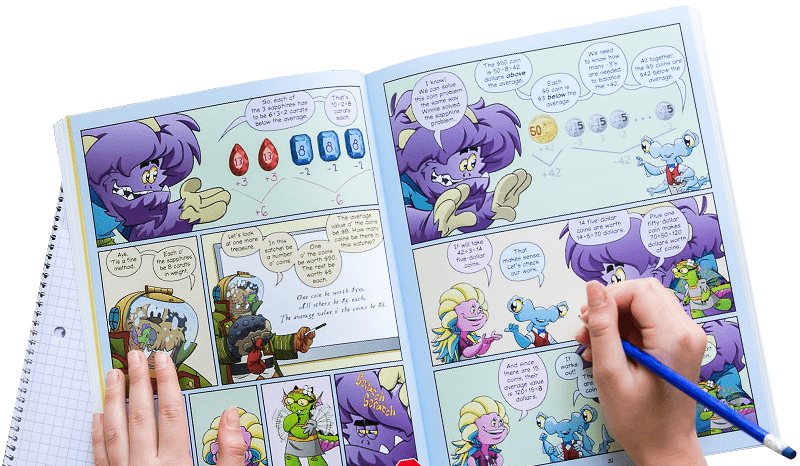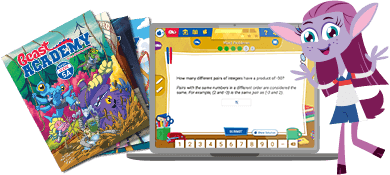Odds vs. Evens
1, 2, 3, shoot! Hold out fingers, then add yours and your opponents to see who wins: Odds or Evens.
Instructions
Here's a quick, simple game for, well, anywhere! At home, at the dentist, driving, waiting in line. Pretty much anywhere with hands!
One player is "Evens" and the other "Odds."
Count, "1, 2, 3, shoot!" and on "shoot" both players hold out any number of fingers on one hand. (The timing is just like playing "Rock, Paper, Scissors." Just make sure you hold out fingers at the same time.) Of course you could hold up 1, 2, 3, 4, or 5 fingers, but don't forget that holding up 0 fingers is also an option!
Add up all the fingers. If the sum is even, the "Evens" player wins. If the sum is odd, the "Odds" player wins.

Don't forget: it's Beast Academy Playground, not Beast Academy Study Hall. Change the rules, be silly, make mistakes, and try again. The Variations and Learning Notes are here for you if you want to dive deeper, but not all of them apply to learners of every age. The most important thing is to have fun.
What do you think of this activity?
We're always looking to improve. Submit your feedback to us below.
- none
- addition
- counting
- even/odd numbers
- probability
- MP2
- MP7
- MP8
- K.OA.A.1
- K.OA.A.5
- 2.OA.C.3

Ready to level up?
Keep problem solving with Beast Academy’s full math curriculum for students ages 6–13. Check out our captivating comic book series and immersive online platform.
LEARN MOREBring problem-solving to your classroom
Keep your entire class engaged with a full book and online math curriculum, for students ages 6–13. 98% of teachers say they’re satisfied with Beast Academy.
LEARN MORE



Ready to level up?
Keep problem solving with Beast Academy’s full math curriculum for students ages 6–13. Check out our captivating comic book series and immersive online platform.
LEARN MOREBring problem-solving to your classroom
Keep your entire class engaged with a full book and online math curriculum, for students ages 6–13. 98% of teachers say they’re satisfied with Beast Academy.
LEARN MORE
Sign up to be notified when new videos are released.
















































